On the coastal strip of Croatia sits the second-largest city— Split City. Due to its location bordering the Adriatic Sea, the area has become known as a major commercial and transportation port, constantly sending and receiving products. Our tour guide Nives taught us that the city’s history dates back to the 3rd century BC when it was founded as the Greek colony Spálathos. Through its thousands of years of existence, it has become the territory of multiple empires including the Byzantine, Venetian, Austrian rule, Yugoslavia, and finally Croatia. Now, the city is best known for its expansive Palace of Diocletian.
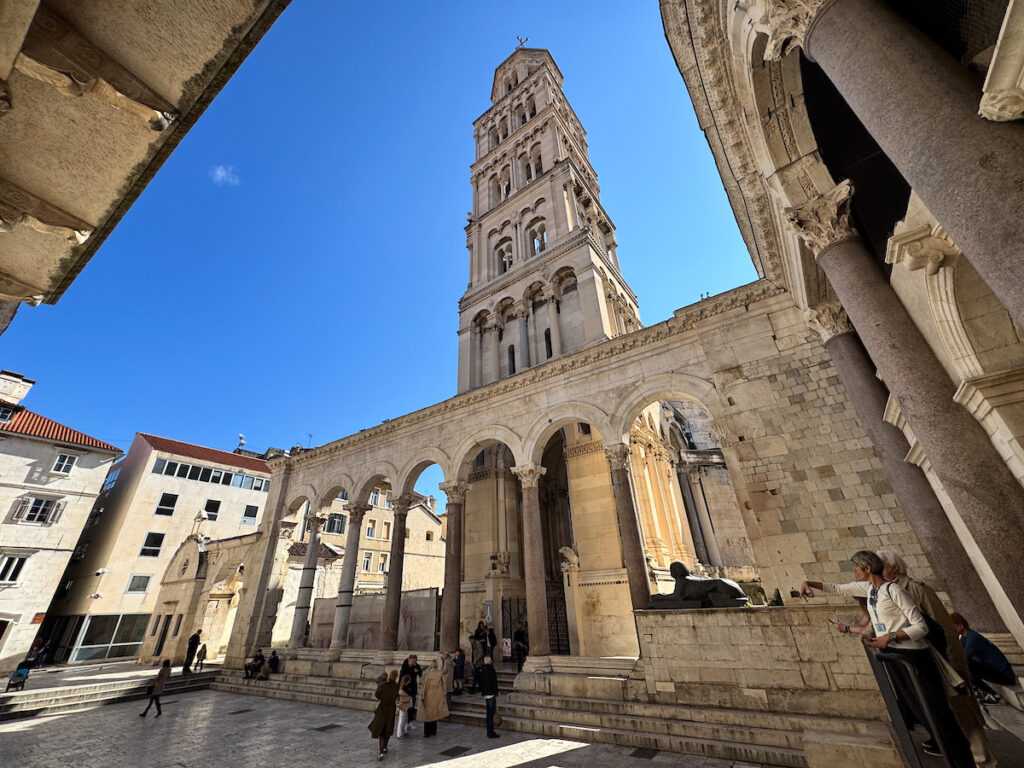
The Palace of Diocletian was built during 295–305 CE as a home for Roman emperor Diocletian in his retirement years. The structure is made of limestone and marble, separated into 4 different sections, all distinguished by a cardinal direction. Originally the Palace had 16 towers (only 3 remain) and 4 gates, resembling a large fortress. The internal court area, Peristyle, allowed access to the northern imperial apartments in front of the Vestibule, to Diocletian’s mausoleum on the East, and three temples to the West .
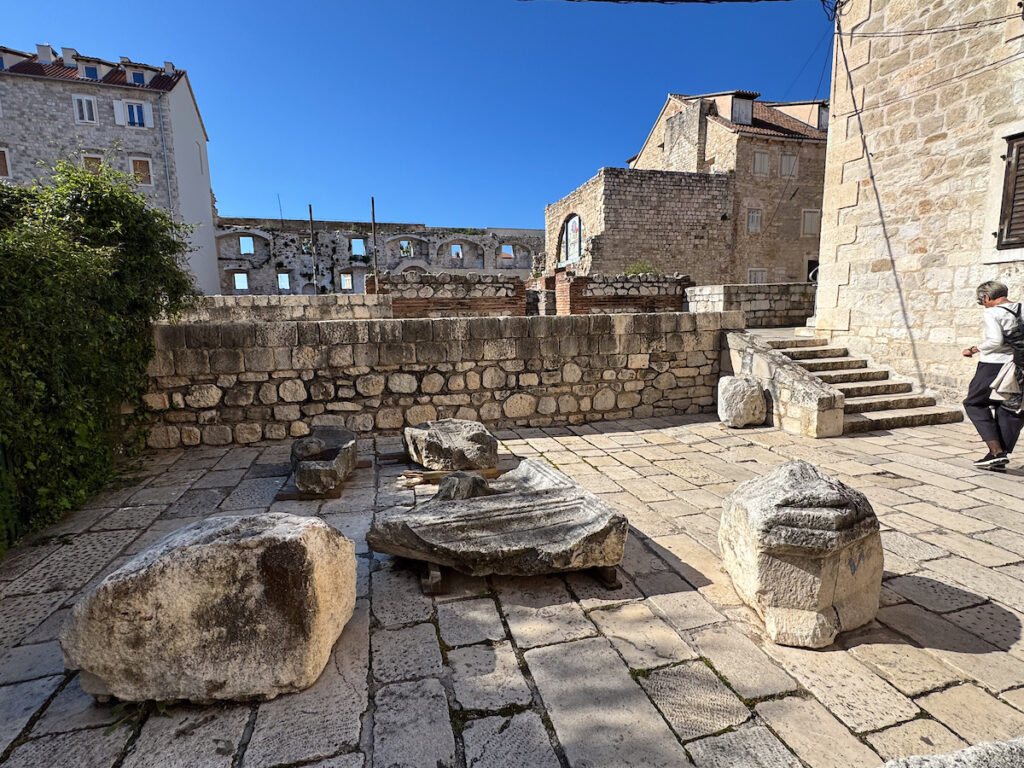
In 1979 the Palace was named a UNESCO World Heritage site and is still in use today. Within the Palace’s 72-foot tall and 7 feet wide walls are the remnants of the “old town.” There are 220 buildings on the Palace grounds, where around 3000 reside or house their businesses. The walls and surrounding architecture contain embellishments of medieval, Renaissance, Baroque, and Roman times.
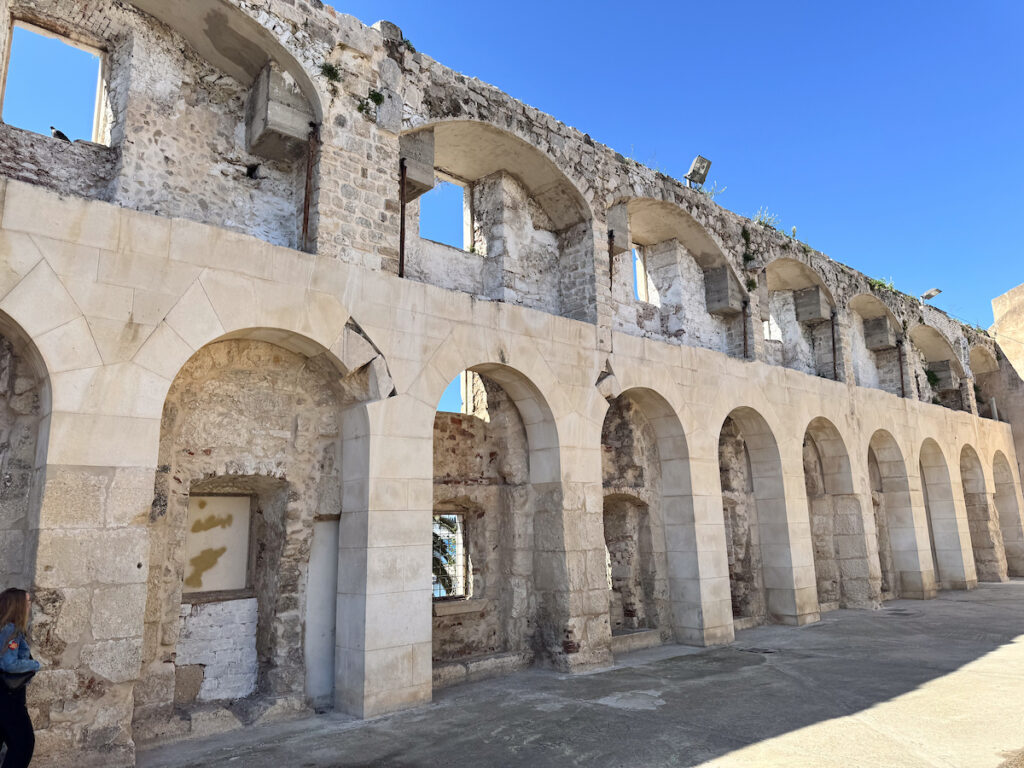
In the Peristyle, an intricate geometric floor mosaic thought to be made in the late 4th and early 5th century was found in 1905 during a building demolition just east of the Vestibule. The same mosaic was found in the courtyard and porch of a Roman building on the north, west and south sides of the Palace. Unfortunately, medieval roads and buildings disrupted the mosaics which were then partially restored and replicated by professionals. Today, the mosaic can be found at the north and southwest Peristyle, and on the ground floor of the Ethnographic Museum.
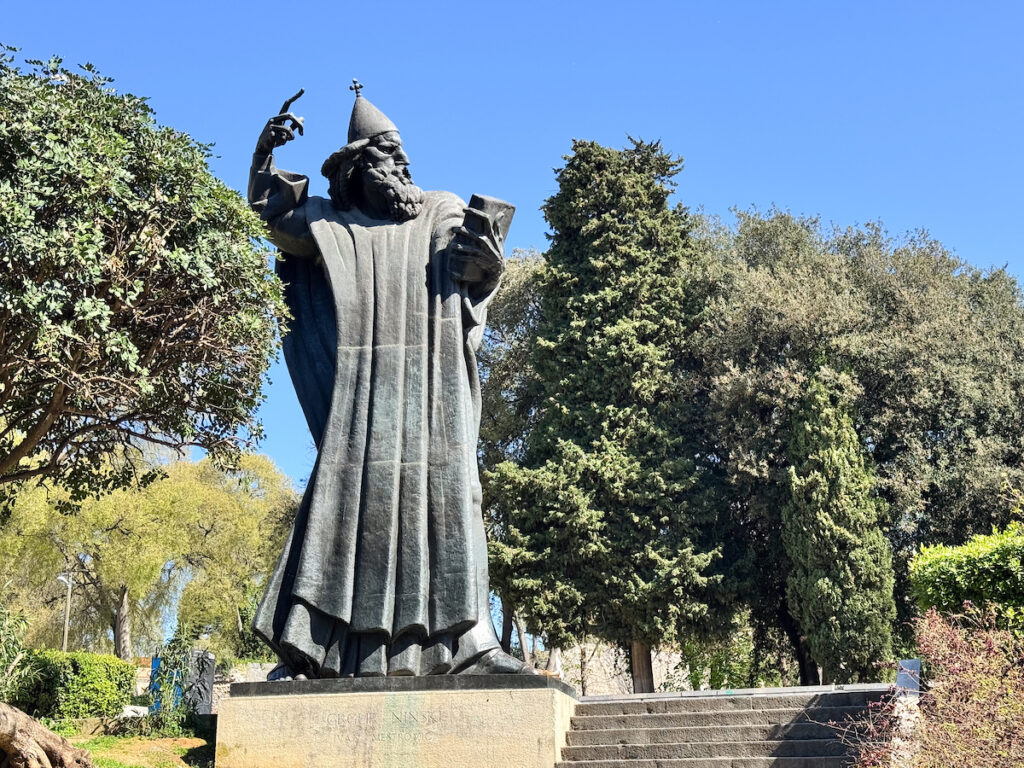
Many religions are represented within the walls with areas like the Split Synagogue on the Western side, the Temple of Jupiter, and the Diocletian Mausoleum which was converted into the Cathedral of Saint Dominus. The Cathedral of St. Domnius is the second oldest structure in the world and regarded as the oldest Catholic cathedral in use for its original intended purpose. The inside of the cathedral has a detailed main altar and side altars, a domed ceiling, and red granite Corinthian columns.
The multi-Emmy Award nominated fantasy drama Game of Thrones had a few scenes filmed in the ancient halls of the Palace. One room served as Daenerys’ throne room and the basement and its dungeons were where Daenerys kept her dragons. Various areas outside and on the edge of the Palace’s walls depicted the fictional city of Meereen.
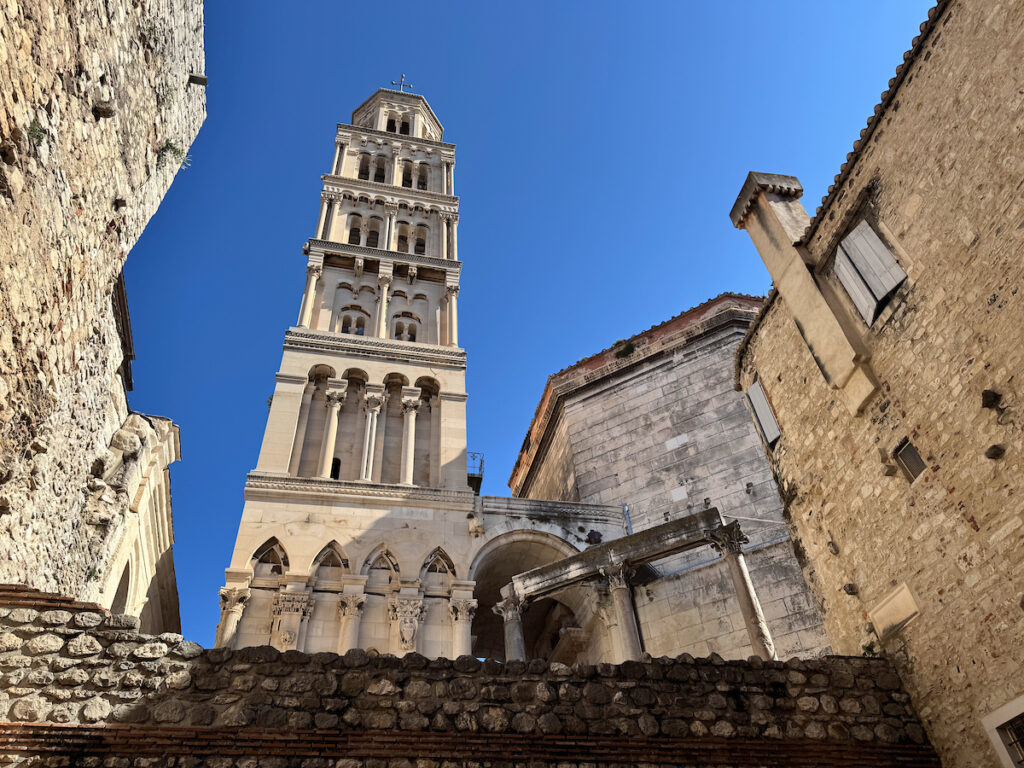
The city of Split lives by a proverb that goes a bit like this: “Work is not a rabbit; it will not run away.” The proverb stands as a testament to the time, money, and effort the city has put into preserving and allowing the Palace of Diocletian to flourish, not worrying about how long it takes or how much work is left to be done.
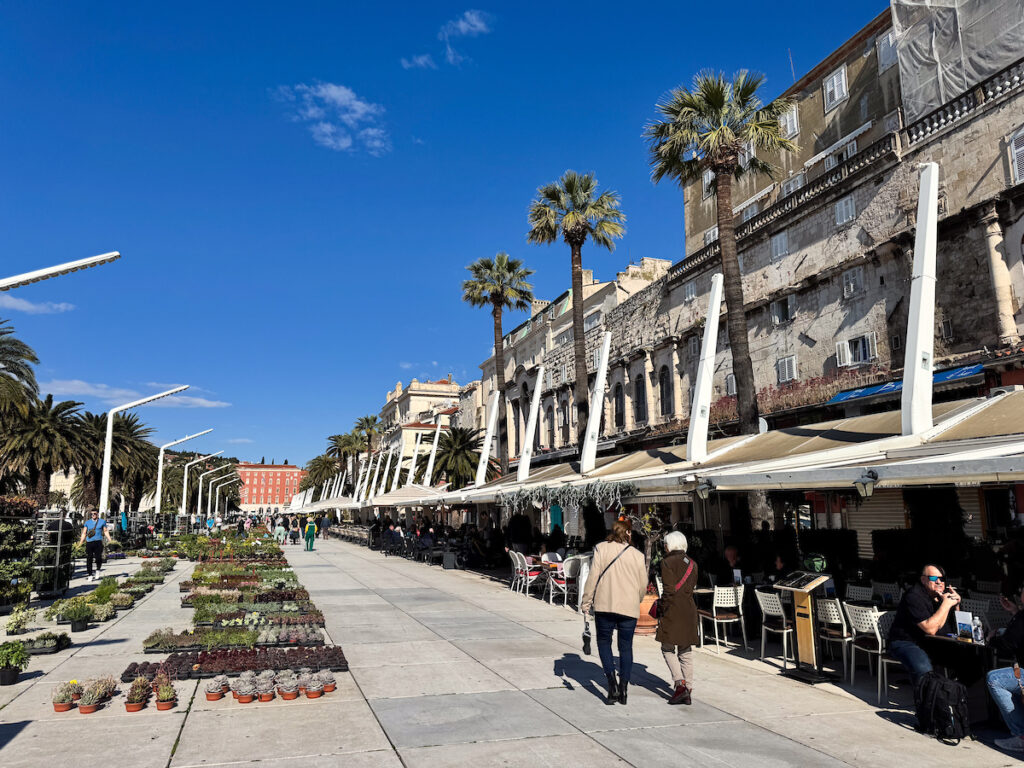
Today, Split stands as a striking blend of living history and modern-day vibrancy—a city where ancient stones echo with stories of emperors, warriors, artists, and everyday citizens across millennia. Whether you’re wandering through the Peristyle, gazing up at the Cathedral of Saint Domnius, or imagining dragons in the palace’s dungeons, the spirit of Split invites you to slow down, take it all in, and appreciate the layers of time woven into every corner. It’s not just a destination—it’s an experience that reminds us that history, when preserved with care and pride, continues to breathe in the present.

